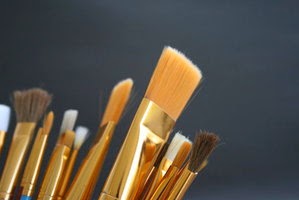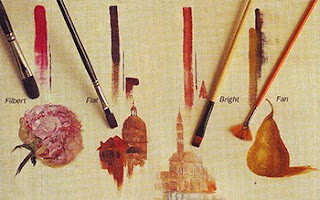Advertisement
Reflective colors
Reflective colors behave the opposite way of the true transparent pigments. The most transparent colors act like stained glass. They let the light penetrate through the wash and reflect from the paper through the color. Reflective colors let a certain amount of light get through to the surface of the white paper, but they are also capable of reflecting light from the surface of the paint.
If painted over a waterproof black line, reflective colors look very transparent while wet, but show a little of their own hue after they dry.
Opaque, semi opaque and reflective colors don't glaze well because they build up to a thick layer. All opaque colors that are light in hue are reflective, but not all reflective colors are opaque. A few reflective colors are considered transparent, yet they reflect light when they are applied in heavy consistency.
Reflective Colors include :
. cobalt Violet
. Cobalt Blue
. Raw Sienna
. Raw Umber
. Viridian Green
. Aureolin Yellow
. Magenta
. Cobalt Green


